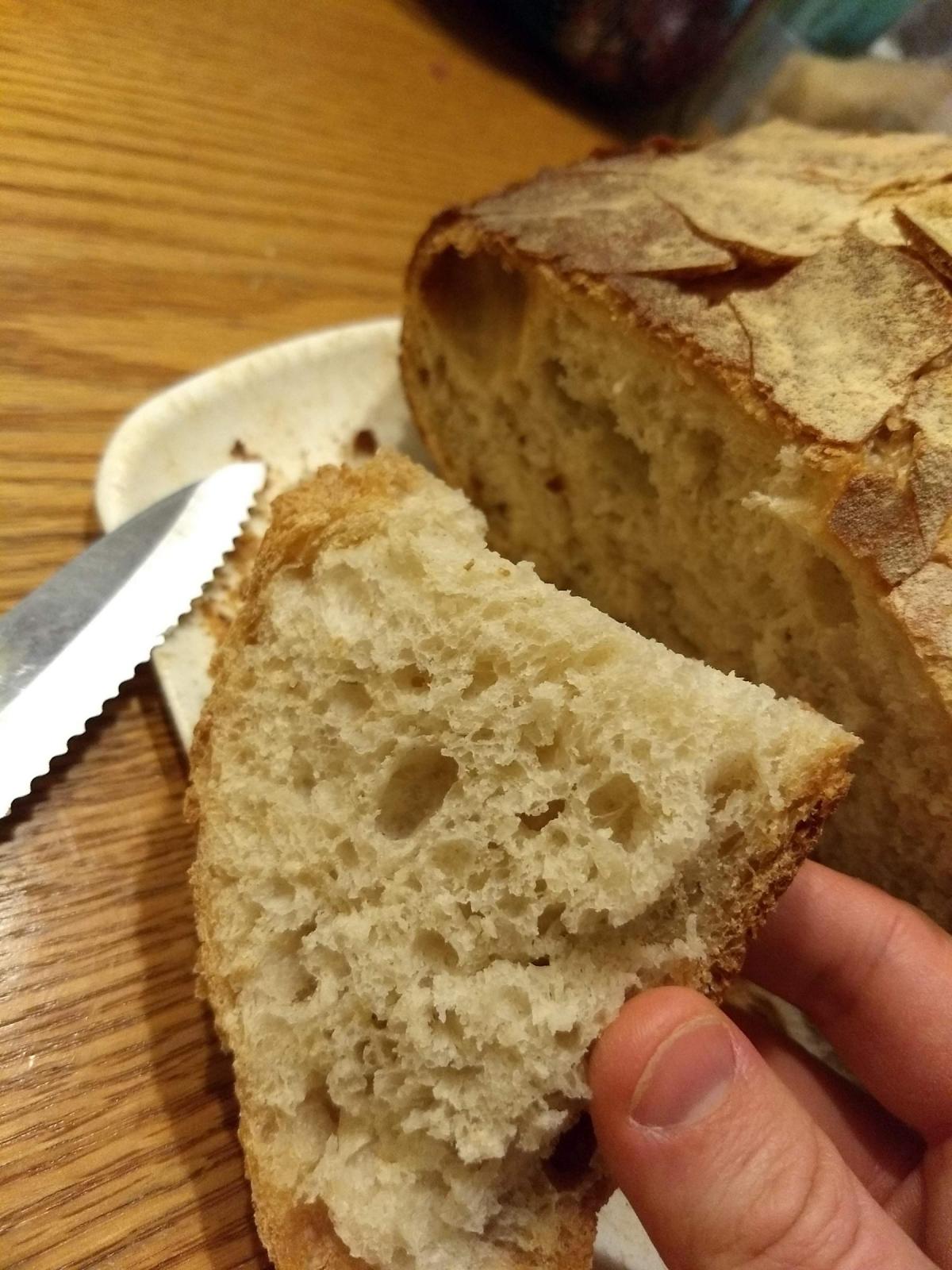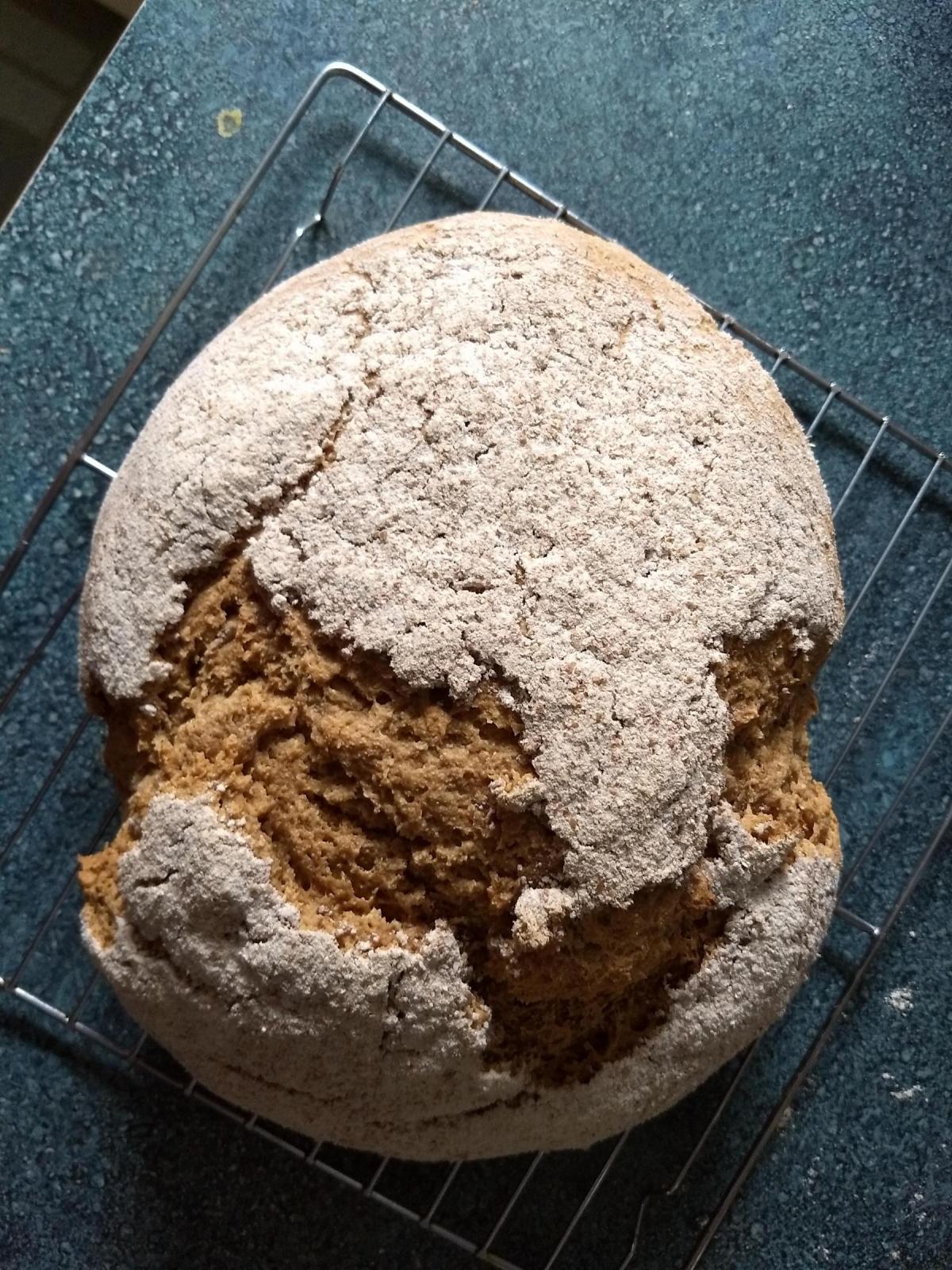Tasty 50% WW Frisbee
I had 50% WW flour to use, and having enjoyed my last bake with Modernist Cuisine's "French Lean Bread" recipe, I thought I'd just try adapting that. A little Googling turned up this article [www.crumblycookie.net] which discussed P. Reinhart's Whole Grains method of two overnight soaks – half the flour with yeast, half with salt.

